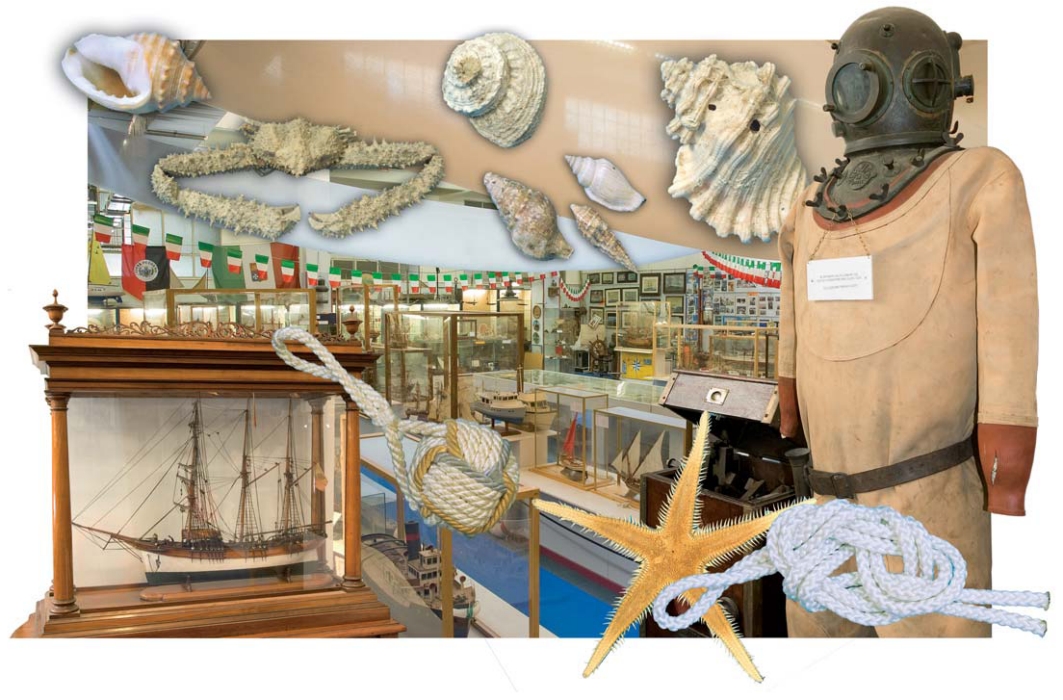{:en}PRESS RELEASE (08/23/2017)
Thursday, August 24, Loano testifies to its connection to the sea with the “Loano and the voice of the sea”, organized by the’Marine Cultural Association ”Lodanum”, under the auspices of the’Department of Tourism, Culture and Sports of the City of Loano and the collaboration of the Coast Guard of Loano, Marina of Loano, Professional Fishermen's Association, Marine Baths Union Loano, Modern Jazz Dance Academy, Old Loano Association, La Bussola Sports Association, the ASCOM Loano, the Nautical Club Loano, Attimo Danza Association, Loano-Boissano Comprehensive Institute, UNITRE Loano, ALA (Hoteliers Association Loano).
The event, which will run throughout the day, will kick off with the arrival of the Fishermen de of the catch in the port of Loano On the dock dedicated to them.
At 9.30, the headquarters of the’Amateur Fishermen's Association will host children interested in learning about the fisherman's trade and the secrets of fishing and the sea.
From 10 a.m. until 12 noon on the Nautical Circle of Loano Will take center stage with sailing. Children and teens will experience a free sea outing with the instructor.
Always from the 10.00, themed screenings will be held on the premises of the Loano Marina and the Coast Guard. Until 12 noon, it will also be possible to visit the Sea Museum in the Kursaal Palace and in the Maccagli Garden the exhibition of fishing equipment.
Throughout the morning the toy train will accompany visitors free of charge to various lively spots in the city. The first departure at 8:45 a.m. by Mazzini Square.
At 17.00 on the coast you can admire the parade of sailboats organized by the Nautical Circle of Loano and the Medusa baths will host demonstrations of dog rescue at sea.
In the dehors of the Bar Rino you can admire for the whole day the model ship exhibition.
At 9 p.m. in the’Prince's Garden Summer Arena will kick off the evening of entertainment “Loano and the voice of the sea”, which aims to raise funds to benefit the Sea Museum.
Arrived at the second edition, the initiative aims to raise awareness of the history of Loano's seafaring industry. This year the evening is dedicated to the birth and development of shipyards.
The theme of shipyards and the sea will be the thread running through the many moments of entertainment and reflection, made possible by the participation of the many cultural and sports associations that have joined the initiative.
The evening's program will feature ballet and modern dance choreography by Lorella Brondo, of Hip Hop dance by Ilaria and Riccardo Marano And singing performances. Students from the Attimo Dance School Loano and of the’Modern Jazz Dance Academy. The show will leave room for prose and poetry readings and to testimonies and stories On the loanese navy.
Leading the evening will be La Stampa journalist Stephen Pezzini. The artistic direction of the evening is entrusted to. Teo Chirico.
Sea Museum
L’Lodanum Association has built for many years now, a small museum-type structure in which it preserves and exhibits objects and documentation on the seafaring industry in Loano and the western Savona area. The association has collected numerous historical and cultural materials such as books, documents, photographs, and models that testify to the area's seafaring past. This heritage is on display in the central hall of the Kursaal Palace.
This is a historical-documentary retrospective of Loano seafaring and tourism through pictures, drawings, documents, and objects.
The exhibition brings together original period photographs, scale reproduced model ships, and marine paraphernalia and equipment.
The photographs represent a cultural-historical track from the second half of the 1800s to the first half of the 1900s.
The exhibition offers images from the early twentieth century depicting fishing activity, shipbuilding activity, and the beginnings of bathing. The photography then helps to reconstruct the transformations of the economy, landscape, environment and society throughout the twentieth century up to the 1950s.
A wealth of documentation testifies to the mercantile development, the boost in maritime trade and shipbuilding in the 1800s.
The exhibition also features images of Loano divers who participated in internationally renowned missions such as the salvage of the Scirè off Haifa.
In giftware, numerous artifacts made by Lovran sailors while embarking on merchant ships and shipyard equipment, sailmaker's outfits, and a rich collection of telecommunications materials should be noted.
Shipyards
In Loano's history, maritime trade and shipbuilding-related activity assumed paramount importance from the time of the Dorias until it reached its peak with the mid-19th century, when it reached its peak in terms of the number of ships and significance of trade.
The existence of shipyards is attested as far back as the mid-1500s, presumably located on the sandy shore in front of Borgo di Dentro, where the Doria galleys and commercial vessels were built.
The activity of the shipyards reached unsurpassed rates in the period from 1815 to 1875, when more than a hundred ships were built by the various shipyards operating in the city: several Lovran families became considerably rich thanks to the flourishing trade, which soon reached every port in the Mediterranean to reach as far as Odessa on the Black Sea and the African coasts beyond Gibraltar. The decline was abrupt and coincided with the development of new steamships, and was also caused by the failure to build adequate port and road infrastructure to sort goods in nearby Piedmont and Lombardy.
In Savoy times, Loano was the landfall of choice for unloading salt from Sardinia, which was transported to Piedmont by mule.
Birth of the Loano shipyards
At the beginning of the second half of the eighteenth century, two young men from Varazze with the surnames Amico and Cerruti, sons of shipbuilders, as the times demanded more and more updates in the art of shipbuilding, left aboard a Ligurian sailing gozzo, for Toulon, where this art had already reached, according to the experts, excellence in its shipyards. After a year of specialization and having received a government certificate, having made their own the techniques related to hull construction and known all their secrets, they decided to take to the sea again to tomare in Varazze.
Just off the coast of Loano the boat was caught in a terrible storm that forced them to try to land on the village beach. The two castaways were taken in by hospitable families with whom they stayed several days because of the bad weather, helping the fishermen with boat maintenance and repair. In Loano they met two girls, got married and before long, with the help of relatives and friends, opened a shipyard.
At that time, such an activity could arise anywhere on the seashore, as long as the depth of the shoreline allowed it. At that time there was not much fixed equipment, sophisticated machinery, cranes, sheds. A small number of hand tools and a lot of “elbow grease” was needed. One would cordon off the area with a palisade and go!
The two partners later split and Amico kept the part where the “Kursaal” is currently located for himself, while Cerruti kept the western part roughly where the Perelli “Residence” now stands.
It was they who gave rise to the construction of boats such as sailing ships, gondolas, gozzi and brigantini, which being made of wood brought work to the entire population. Different sectors and activities were involved: woodcutters for wood, blacksmiths for the construction of anchors, buoys and buoys with chains, farmers who grew hemp which was then macerated to make yarn, master rope makers, and workshops for flags. There were many trades that profited from the shipyards and all walks of life were involved getting a good profit from this activity.
After 1875, however, a slow decline of the shipyards began, orders for the construction of the large wooden sailing ships began to decline as they were gradually replaced by iron boats that mounted engines, large wood- or coal-fired boilers that produced more power and consequently more speed.
This decadence unfortunately involved the entire population of Loano, causing great economic hardship.
{:}

